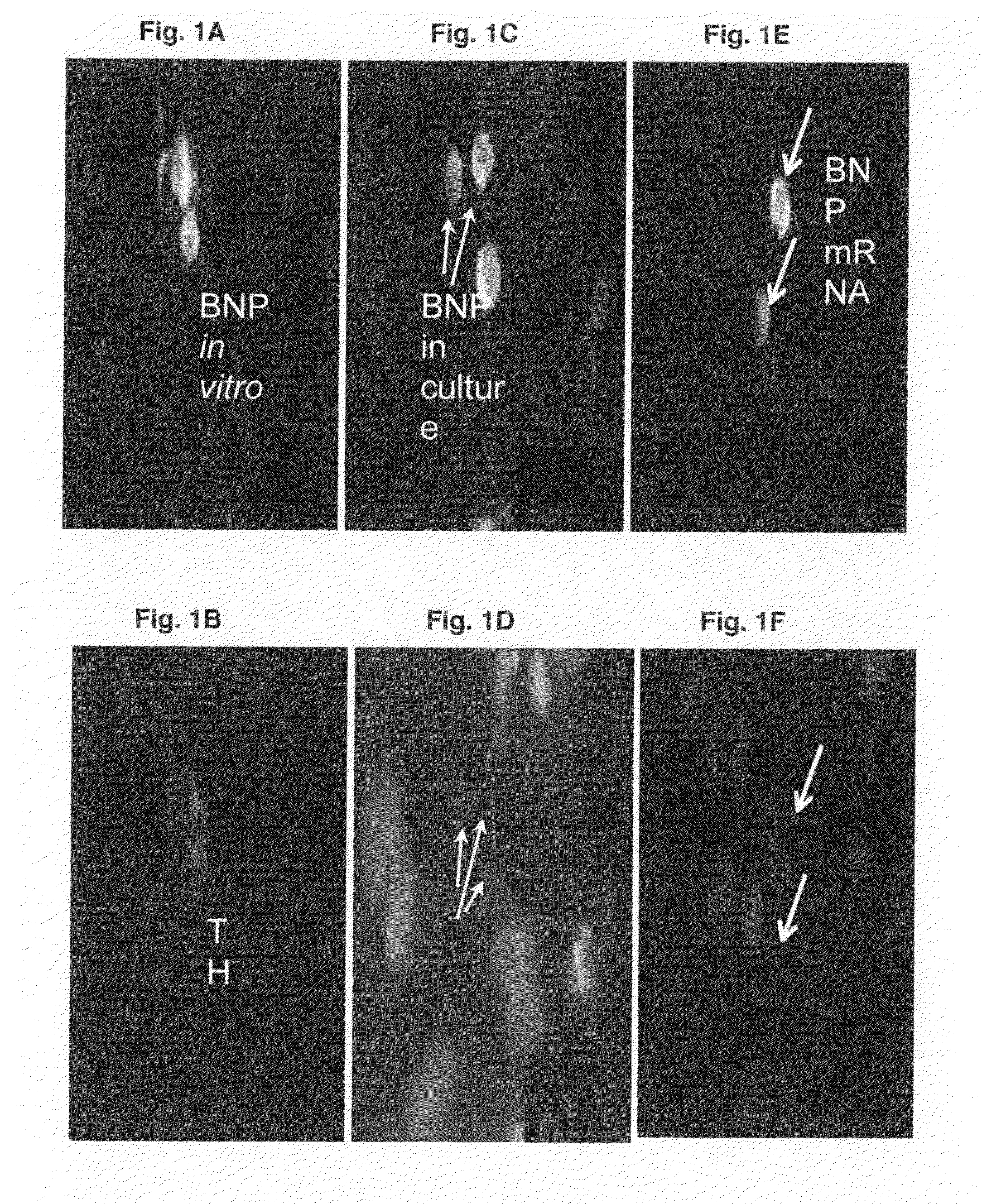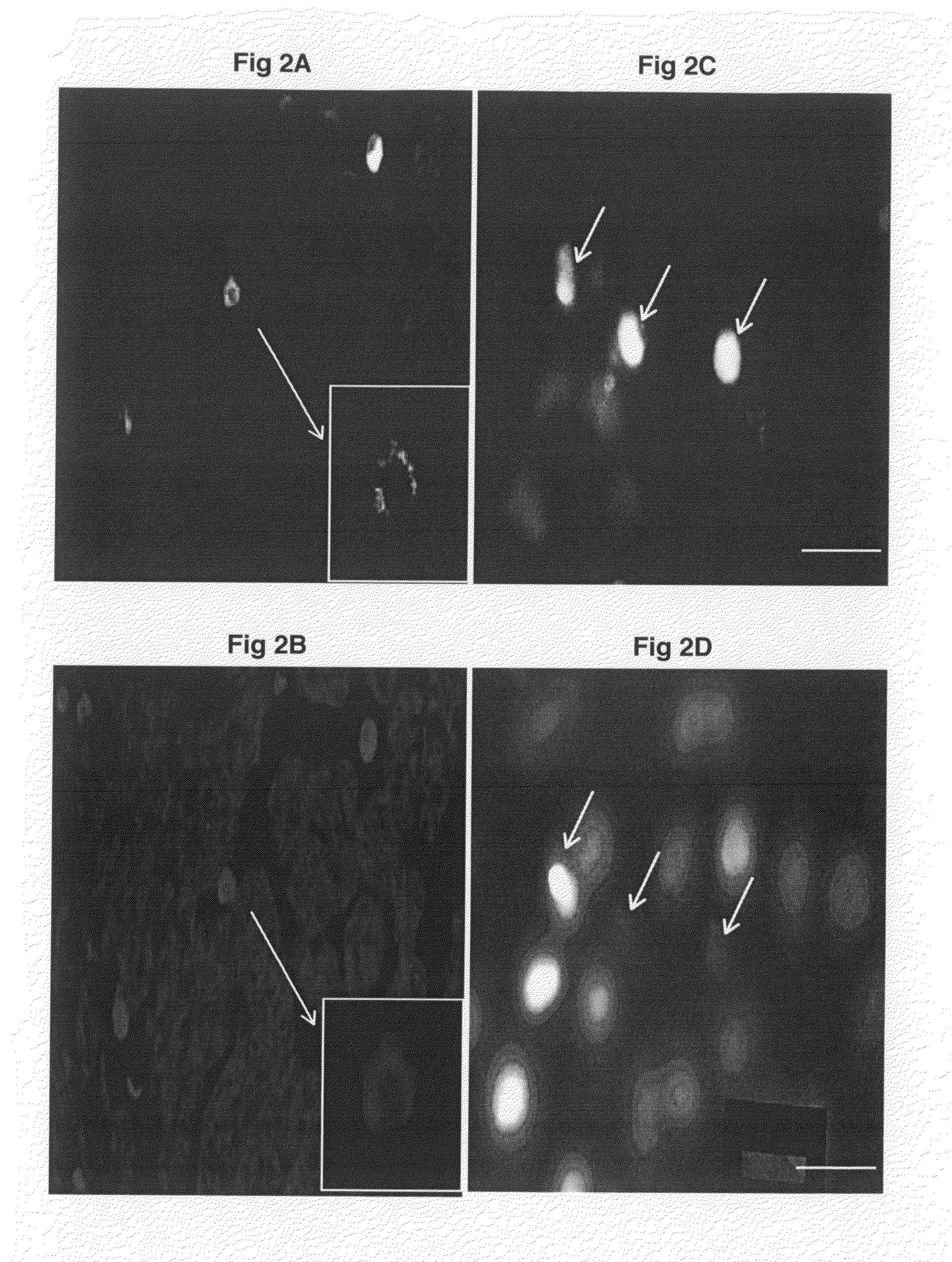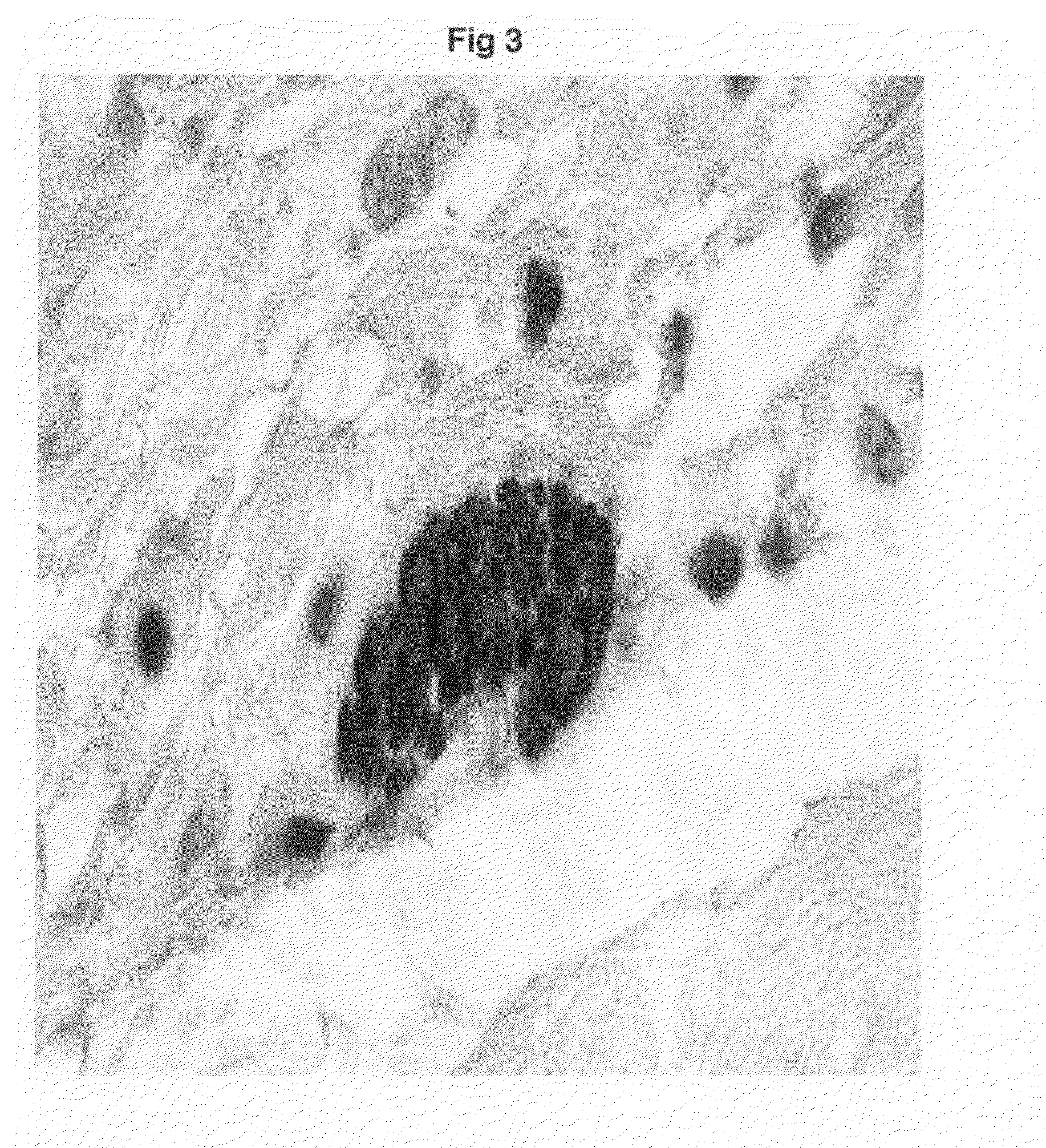Regulation of Brain Natriuretic Peptide and Catecholamines for the Treatment of Cardiovascular Diseases
- Summary
- Abstract
- Description
- Claims
- Application Information
AI Technical Summary
Benefits of technology
Problems solved by technology
Method used
Image
Examples
example 1
Preparation of Cardiac Cell Culture
[0061]Myocyte-intrinsic cardiac adrenergic cell cultures (E16) were prepared. The dissociated cardiocytes were pre-plated in medium containing bovine serum albumin, which allows fibroblasts and endothelial cells to attach to the plate. The cell suspension of the subsequent adherent culture is poured off to remove fibroblasts and endothelial cells, enriching for a primary population of myocytes and intrinsic cardiac adrenergic cells in the subsequent culture.
[0062]EXAMPLE 2
Immunohistochemical Study
[0063]Immunofluorescent staining is performed on 3 mm paraffin sections of 4% paraformaldehyde fixed cardiac tissue. For double staining of tyrosine hydroxylase-brain natriuretic peptide and tyrosine hydroxylase-δ-opioid receptors in intrinsic cardiac adrenergic cells, tissue sections are incubated with anti-brain natriuretic peptide and tyrosine hydroxylase-δ-opioid receptor antibody (1:500, Chemicon) for 1 hr at 25° C. After washing, the slide is incubat...
example 3
Adrenergic Gene Expression in Fetal Heart
[0065]The mRNA from fetal rat hearts at embryonic day 16 (E16) and from maternal adrenal glands is isolated using TRIZOL®. Total RNA is reverse transcribed into cDNA using the first-strand synthesis kit (Invitrogen). The cDNA is reverse transcribed with primers 5′ AACTCTCCACGGTGTACTGGTT 3′ (forward) and 5′ GCATAGTTCCTGAGCTTGTCCT 3′ (reverse) for tyrosine hydroxylase (TH) and 5′ ACTGGAGTGTGTATAGCCAGCA 3′ (forward) and 5′ ACACTGGAACCACAGATAGCCT 3′ (reverse) for phenylethanolamine N-methyl transferase.
[0066]The expression of mRNA of tyrosine hydroxylase and phenylethanolamine N-methyl transferase was detected in fetal heart at E16 when no sympathetic innervation was detected (FIGS. 5A and 5C). FIGS. 5E and 5G show the immunoreactivity of tyrosine hydroxylase and phenylethanolamine N-methyl transferase in intrinsic cardiac adrenergic cell-myocyte co-cultures respectively. The PCR products of fetal heart mRNA for tyrosine hydroxylase and phenyleth...
example 4
[Ca2+]i Transients in Intrinsic Cardiac Adrenergic Cells
[0067]The intrinsic cardiac adrenergic cells in intrinsic cardiac adrenergic cell-myocyte co-culture (FIGS. 7A-7B) preparations generated spontaneous [Ca2+]i transients with markedly irregular rhythm. The spike frequency of [Ca2+]i transients recorded from a total of 42 cells varied with a mean rate of 5±4 spikes / min. The morphology of [Ca2+]I transients was characterized by a rapid upstroke with varied down sloping phase (cystolic calcium removal). The [Ca2+]I transients of intrinsic cardiac adrenergic cells were abolished after administration of calcium free solution (5±2 to 0 spike / min, n=5), or tetrodotoxin at 10 mM concentration (11±7 to 0 spikes / min, n=6). Nifedipine in the concentration range of 1 and 10 mM, reduced the amplitude of [Ca2+]i transients of intrinsic cardiac adrenergic cells by 54±8 and 82±3% (p2+]i transients of intrinsic cardiac adrenergic cells. w-Conotoxin and w-Agatoxin IVA (both 30 mM) did not affect ...
PUM
| Property | Measurement | Unit |
|---|---|---|
| Fraction | aaaaa | aaaaa |
| Cell angle | aaaaa | aaaaa |
Abstract
Description
Claims
Application Information
 Login to View More
Login to View More - R&D
- Intellectual Property
- Life Sciences
- Materials
- Tech Scout
- Unparalleled Data Quality
- Higher Quality Content
- 60% Fewer Hallucinations
Browse by: Latest US Patents, China's latest patents, Technical Efficacy Thesaurus, Application Domain, Technology Topic, Popular Technical Reports.
© 2025 PatSnap. All rights reserved.Legal|Privacy policy|Modern Slavery Act Transparency Statement|Sitemap|About US| Contact US: help@patsnap.com



